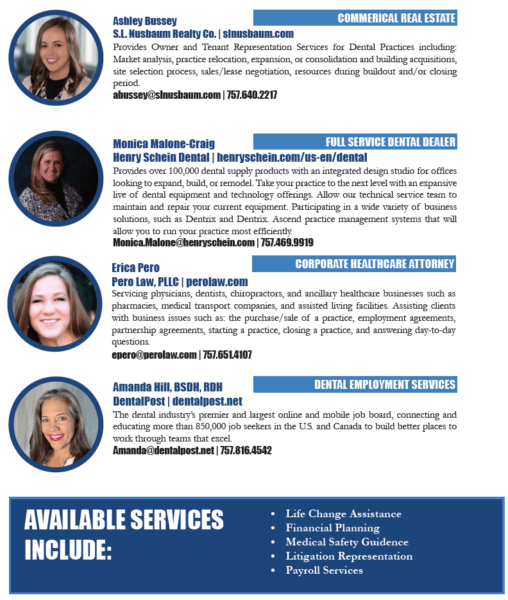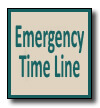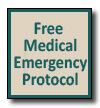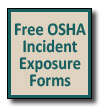From Your Regulatory Compliance Specialist-Linda Cannon: Covid-19: #16.
 |
| Staff of MSDS wish you to Stay Safe, De-Stress and Stay Active! Linda, Anee, Saba, Nicky, Ifra and Gaetan (no photo)      MSDS Thanks all of our Clients as Dental Healthcare Providers! |
Outline:
This newsletter contains the following topics:
– Vaccine for kids under 12;
– Boosters;
– Grilled Oranges for Lost Taste and Smell
– Dental Business Network, Members Affiliations

Next up for Covid vaccines: kids under 12
By Maggie Fox, CNN Aug 24, 2021
The US Food and Drug Administration is expected to give full approval to Pfizer’s coronavirus vaccine for youths ages 12-15 soon. Dr Minh Tu’s two sons, 4 and 9, have received the Pfizer vaccine as part of a clinical trial with Rutgers University. Chris Pedota/NorthJersey.com/USA Today Network
The US Food and Drug Administration has given full approval to Pfizer’s coronavirus vaccine for people age 16 and older. Approval for youths ages 12-15 is expected to follow soon.
“I don’t think it’ll be long before they extend it to 12 to 15 — maybe within a few weeks to a month or so,” said Dr. Bob Frenck, director of the Vaccine Research Center at Cincinnati Children’s Hospital.
Parents are already clamoring to hear more about approval or authorization for children under 12, however. Studies looking at that are underway.
It appears that kids can get a much smaller dose of vaccine than adults and still get the same immune response, Frenck told CNN.
That’s good news, because it means vaccine supply can be stretched further, Frenck said.
“We took a step back after we did the adolescents, and we looked at the dosing, because we thought that we may be able to use a lower dose and be able to get the same immune response,” Frenck said.
It looks like children ages 5-12 get a strong immune response with 10 micrograms of vaccine antigen, Frenck said.
“So one third of the dose that we’re giving adults, or even one third of the dose that was used in 12-year-olds and above, was just as immunogenic. We got just as good an immune response as the 30-microgram dose and there were less side effects,” he said.
“So because of that, for the 5-12-year-old dosing we are looking at 10 micrograms, and then, in the younger kids, under 5, even going down further to 3 micrograms.”
That might be confusing, but it simply means children have a stronger immune response, Frenck said. “It just really proves as far as that the kids’ immune responses are good. They’re very strong,” he said.
“A lot of people are asking us: ‘Does this mean you’re giving us less of a vaccine?’ I said, well, we’re giving you less antigen, but their immune response is so good that they’re making the same immune response — so there’s no need to give more vaccine,” Frenck added.
“We’re giving enough vaccine to be able to get the same immune response as we’re seeing in people 25 years of age that are getting 30 micrograms.”
More is not better, Frenck said — the immune response hits a maximum, and giving a higher dose doesn’t boost it.
“We were able to decrease by a third, and still got the same immune response,” he said.
As with adults, side effects are generally mild and do not last long, Frenck said.
“The side effects we’re seeing in the kids are really identical to what we’re seeing in adults,” Frenck said. That includes a sore arm, fatigue, headache and fever in about 10% of children, he said.
Dr. Anthony Fauci, director of the National Institute of Allergy and Infectious Diseases, said he was confident the trials would show good efficacy among younger children.
As with all the coronavirus vaccine trials, investigators like Frenck are speeding up the bureaucratic steps for submitting vaccine data to move the process along more quickly.
“Typically what happens is that you get a result from a Phase 1 (trial) and then you’re showing it back to the company and saying, ‘Okay, is this good enough that we’re going to go to a Phase 2,’ and then having to think about it. And then you same thing with Phase 2 to Phase 3. Here it just marched right along because the funding was already available,” he said.
Often a study lasts four or five years, and the researchers gather all the data up at the end of that period of study and submit it to the FDA. “So you can imagine getting four or five years’ worth of data all at one time — that’s a lot to try to process,” he said.
“What happened here was that the FDA was being given packets of information in real-time. As the companies got the information, it’s being submitted to the FDA for them to review so when they got to a point in time of looking at the emergency use authorization, the FDA was already very familiar with the products and they didn’t have to start from ground zero.”
Moderna is also considering lower doses in younger children, Frenck said.
Pfizer says it will apply to the FDA for authorization to use its vaccines in children ages 5-11 by the end of September, once it sends all the data in.
Moderna, whose vaccine is authorized for people 18 and older, has filed for EUA for children 12-17. It expects to have data ready on younger children later this year.
Johnson & Johnson is in “active discussions with regulatory authorities regarding our development plan and trial designs” for teens and children and expects to start trials in the fall.
Texas Gov. Abbott, who banned mask and vaccine mandates, tests positive for Covid
NIH director says new Israeli Covid data is building a case for booster shots in the U.S.
Airlines split on whether to mandate Covid vaccines for employees
The plan is subject to a formal recommendation from a CDC vaccine advisory committee and approval from the FDA, also a formality.
The announcement came ahead of a White House Covid press briefing Wednesday, where federal health officials further outlined their plan for boosters. President Joe Biden is expected to speak on the U.S. effort after the briefing, the White House told reporters Tuesday.
U.S. authorizes booster shots for Americans eight months from the second dose
The decision to recommend booster shots comes as the public becomes increasingly concerned about the delta variant and a rise in breakthrough cases — infections in fully vaccinated individuals. It marks a shift from previous comments made by U.S. health officials, who said in recent months that fully vaccinated Americans did not need booster shots at this time.
U.S. officials changed their message on boosters in recent days as cases continued to rise. Fauci said Thursday that everybody will “likely” need a booster shot at some point. On Friday, federal officials approved administering booster shots to Americans with weakened immune systems, which includes cancer and HIV patients and people who have had organ transplants.
National Institutes of Health Director Dr. Francis Collins, who also signed the statement, said Tuesday that new Covid data, including from Israeli health officials, caused U.S. health leaders to rethink their position on vaccine boosters. Israel released new data Monday showing a reduction in the effectiveness of Pfizer’s Covid vaccine against severe illness among people 65 and older who were fully vaccinated in January or February.
The U.S. is beginning to see similar trends in vaccine effectiveness as well, Collins said. He said the rise in breakthrough cases may be due to a combination of the fast-spreading delta variant and Covid vaccine protection waning over time.
The effectiveness of Pfizer’s Covid vaccine steadily declines over time, dropping to about 84% for vaccinated people about four to six months after getting their second dose, according to CEO Albert Bourla. Moderna said its vaccine remained 93% effective in the first six months after the second dose but expects that protection to fall and boosters will be necessary.
During a press briefing Wednesday, Walensky said officials based their decision on studies that showed immunity from Pfizer and Moderna’s vaccines diminished over several months. One study in New York from May 3 through July 25 showed that the vaccine’s effectiveness in protection against infection dropped from around 92% to 80%. Another study by the Mayo Clinic showed that Pfizer’s vaccine efficacy fell from around 76% to 42% while Moderna’s declined from 86% to 76%.
“Right now, it’s still as if our vaccine protection is working really well,” Collins said. “But we don’t want to wait until it’s like oh, too late.”
The move to recommend boosters is likely to spark criticism, especially as a large portion of the global population has yet to receive even one dose of a Covid vaccine.
Earlier this month, the World Health Organization asked wealthy nations to stop the distribution of booster shots until at least the end of September to give poorer countries the chance to vaccinate their populations with the first rounds of shots. The request is part of WHO Director-General Tedros Adhanom Ghebreyesus’ plan to vaccinate 40% of the world by December.
The U.S. released the statement minutes after the WHO condemned wealthy nations that support boosters for the general public.
“We believe clearly that the data to date does not indicate that boosters are needed,” Dr. Soumya Swaminathan, the WHO’s chief scientist, said during a press briefing. “And we need to know which groups at what period after the vaccination and which particular vaccines people have received in their primary course.”
Lawrence Gostin, director of the WHO’s Collaborating Center on National and Global Health Law, called the U.S. booster shot plan “a slap in the face” to the international health agency.
“There’s a better way to create a win-win,” he said in a phone interview. “We should boost only our health workers and vulnerable people. At the same time, Biden should pledge a bold campaign to vaccinate the world, including vastly increased donations and a surge in vaccine production.”
“That way we do good to America and do good for the world. It’s in our national interests to stop the development of even more dangerous variants,” he added.
During a White House briefing Tuesday, press secretary Jen Psaki said the administration believes it can boost the American population while ensuring the rest of the world gets vaccinated.
“We believe that is a false choice. We can do both,” Psaki said. “The United States is far and away the biggest contributor to the global fight against Covid. We will continue to be the arsenal for vaccines around the world. We also have enough supply and had long planned enough supply should a booster be needed for the eligible population.”Administering third shots appears to be safe. Early data from small studies of the effects of booster doses in immunocompromised patients didn’t show any severe adverse effects from a third shot of an mRNA vaccine, nor did recipients develop side effects beyond those already identified after the initial two-dose regimen.
Once booster shots are approved, nursing home residents, health-care providers and the elderly — the first groups to get vaccinated in December and January — are likely to be prioritized to get extra shots, Collins said Tuesday. He said “ideally” people should stick with the same manufacturer they got their first two doses from.
“But if for some reason you don’t have access to it, well, then get the other one,” he said. “Again, I’d feel more comfortable as a scientist fixing our plans on real data, and that means sticking to the same kind of vaccine that you got to begin with.”
–CNBC’s Rich Mendez and Robert Towey contributed to this report.
FOR PATIENTS RECOVERING AT HOMENutrition and Hydration:
Quick Facts for COVID-19 Patients
 Background
Background
In the US, only around 12% of those infected with COVID-19 will require hospitalization.1 The remaining 88% are people who will manage their illness and recover at home.
The most common symptoms of COVID-19 infection are fever, cough, and shortness of breath; these symptoms are usually accompanied by fatigue and loss of appetite.
Nutrition and Hydration are Central to Recovery
With an infection, the body must work intensely to mount an immune response. High fever is the immune system’s way of revving up metabolism to “battle the bug.” Fever is also associated with excess loss of fluids and increased metabolism which can lead to dehydration and increased nutritional requirements.
Even though you may not be thirsty or hungry, it is important that you continue to eat and drink fluids to support your body’s ability to fight the virus and support your body’s immune function.
Protein and calories are important to protect against muscle loss while fighting COVID-19, especially if you are bedridden or inactive.
For more information, visit nutritioncare.org/COVID19.
Meeting the Nutritional Needs of a Person with COVID-19
Nutritional Requirements:
• Fluid: about 3 quarts (3 liters) of fluid per day
• Calories: 2000 – 2500 calories per day
• Protein: 75 – 100 grams per day
Drink Fluids Every Hour
At a minimum, you should drink 2‒4 ounces of fluid every 15 minutes. The optimal fluids to drink are clear liquid beverages with calories and protein, oral rehydration solutions, or sports drinks.
Eat a High Calorie, High Protein Diet
– Try eating 6 times a day, every 2–3 hours. Eat even if you are not hungry.
– Calories are important to protect against the breakdown of muscle for energy. Due to the increased stress from COVID-19, you need more calories than your normal diet.
– Try to eat 75‒100 grams of protein per day which is 10‒14 ounces of a protein source. Good protein sources are peanut or nut butter, milk, eggs, yogurt, cheese, meat/fish/poultry, protein shakes.
– Due to decreased appetite, now is not the time to restrict calories. Eat nutrient-dense foods. Drink fruit juice, milk, or other calorie-containing beverages.
– Double or triple the portion sizes of added fats and oils (butter, margarine, cream cheese, sour cream, and avocado).
– Try using liquid nutritional supplements (available in grocery stores and drug stores) between meals to increase your nutritional intake.
– Eat small amounts frequently.
Food is medicine when you are ill.
Can Eating a Burnt Orange Bring Back Lost Senses of Taste and Smell After COVID-19?

Loss of smell and taste (medically known as anosmia and dysgeusia, respectively) wasn’t one of the original COVID-19 symptoms referenced by the Centers for Disease Control and Prevention (CDC) last spring, but it was eventually added to the agency’s official list after a growing body of research found that many people who contracted the coronavirus experienced the unusual symptom.
Now, a January 2021 study published in the Journal of Internal Medicine has found that nearly 86% of 2,581 COVID-19 patients studied experienced a loss of taste and smell from the novel coronavirus. The researchers also found that 15% hadn’t recovered their sense of taste and smell 60 days after infection, while nearly 5% were in the same situation six months later.
Enter the burnt orange hack. Social media is filled with testimonials from people who swear eating a charred orange mixed with brown sugar helped them regain their sense of taste and smell after having COVID-19. In one video, a TikTok user called this a “Jamaican remedy” before she eats the mixture and then says, “I waited two weeks for this.”
Another TikTok user said she was able to taste Dijon mustard after eating a burnt orange. She did point out, though, that it could have been a coincidence. This content is imported from TikTok. You may be able to find the same content in another format, or you may be able to find more information, on their web site.
Meanwhile, another TikTok user said it “didn’t work” for her, and even former Bachelorette star Kaitlyn Bristowe mentioned trying it on her Instagram Stories. She didn’t have good results, either.
So, what’s the deal? Can this type of food challenge really help bring back a lost sense of smell and taste? We asked doctors for their opinion.
First, why do some people lose their senses of taste and smell after COVID-19?
This is a common side effect of viruses that replicate in your nose and throat, says Richard Watkins, M.D., infectious disease physician, and professor of medicine at the Northeast Ohio Medical University. Viruses can cause inflammation and swelling in your nasal passages and that can cause congestion, tamping down your senses in the process.
But why this symptom lingers in some people is not totally clear. “The receptors for the virus have been found in the special lining of the nasal cavity that contains the olfactory—smell—nerves that are the first to detect odors in the air,” explains anosmia researcher Eric Holbrook, M.D., director of rhinology at Massachusetts Eye and Ear and associate professor in Otolaryngology-Head and Neck Surgery at Harvard Medical School. “Although these receptors have not been found on the nerves themselves, the surrounding damage from the infection likely causes the smell loss.”
Your sense of smell is closely connected with your ability to taste, he adds, hence the loss of smell and taste. (Important to note: COVID-19 does not make you physically lose taste buds!)
The good news: The epithelium, which lines your nasal cavity, has cells that can divide and regenerate those damaged nerves, Dr. Holbrook says. “But they have to travel back to the brain and make proper connections. That can take time,” he says.
What is the burnt orange hack, and can it really help bring back your sense of taste or smell?
The recipe is pretty simple. You char an orange over an open flame (most people do it on their gas stovetop) and then peel or cut off the skin. You mash up the fruit, mix it with some brown sugar, and eat the concoction. People who swear it works seem to be able to taste the mixture immediately, while others say it does nothing—or maybe helps prompt their taste buds to react in a few hours.
But doctors aren’t totally convinced. As of right now, the evidence is “obviously anecdotal,” Dr. Watkins says. The trick hasn’t been studied and positive results haven’t been replicated by researchers, so “from a scientific standpoint, I doubt it works,” he adds.
It’s difficult to even theorize why this particular hack would work, says Iahn Gonsenhauser, M.D., chief quality and patient experience officer at the Ohio State University Wexner Medical Center. “There is nothing we’re aware of that would explain why this would be a successful, viable solution,” he says, given that losing your sense of taste is typically linked to losing your sense of smell with COVID-19. As a result, eating strong flavors alone is unlikely to jumpstart your sense of taste if your sense of smell still isn’t there yet.
Dr. Holbrook agrees. While eating this particular food mixture isn’t necessarily harmful (as long as you’re careful around open flames), there’s really no evidence that it works and is “another lesson for the abundance of false claims that permeate social media regarding ‘therapies’ for all different types of health disorders, including COVID-19.”
There’s also this to consider, per Stanley H. Weiss, M.D., a professor of medicine at both the Rutgers New Jersey Medical School and the Rutgers School of Public Health: People who believe the hack worked for them may have already been recovering their sense of smell.





CannonRidge – Linda Cannon is the director. It’s or 501c3 (she is also your Regulatory Compliance Specialist) wants to invite you to come out and run the 5 acres.
If you and your children don’t have any place to run, or your children want to come and enjoy the mini Gypsy Horse we have, you are more than welcome. We will only have one family at a time out. But the children can enjoy brushing Sheldon and taking out braids and putting them back. They can take him for a walk. He does help the children and adults with stress. Just Email me at [email protected] or text me at 757-718-1515 (Text Only) and I will put you on the books. There is never a change. https://therapeuticridingcenter.com



